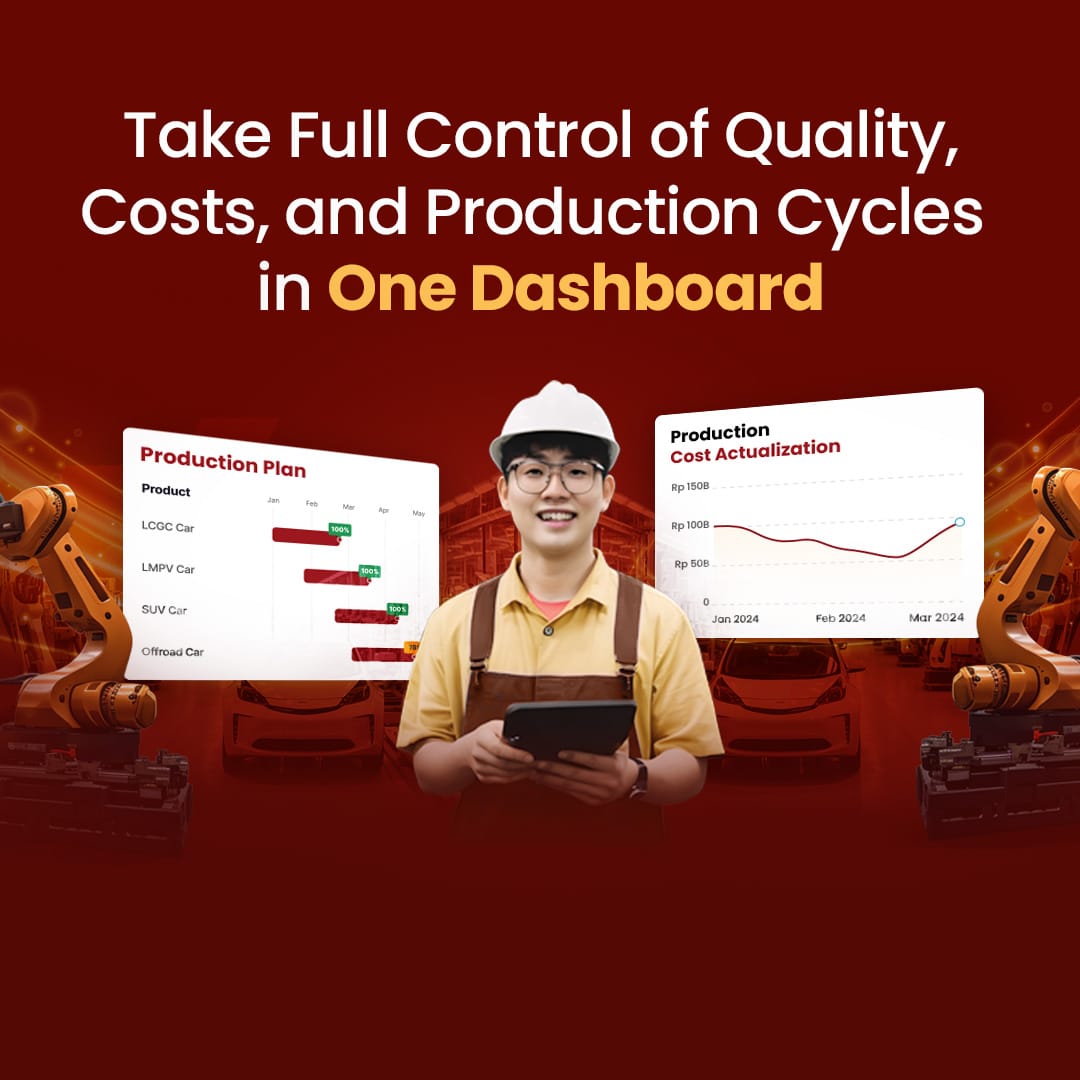Understanding MRP is essential for optimizing your production processes and maintaining efficient inventory control.
MRP is a system used by manufacturers to calculate the materials and components needed to produce a product. By taking inventory of existing materials, identifying additional requirements, and scheduling their production or purchase, MRP ensures the availability of the right inventory at the right time. This leads to improved efficiency, flexibility, and profitability for businesses.
Throughout this article, we will delve deeper into the intricacies of MRP, outlining its processes, steps, and challenges. By the end, you will have a comprehensive understanding of how MRP can enhance your production planning and supply chain management.
Table of Content:
Table of Content
How Does MRP Work?
Material Requirements Planning (MRP) is a crucial component of supply chain management that helps manufacturers streamline their production processes and ensure efficient inventory management. But how does MRP actually work?
MRP relies on a systematic approach that utilizes various inputs, including a bill of materials, inventory data, and a master production schedule. The bill of materials provides a detailed list of all the materials and components required for a specific product. These materials are classified as either independent demand, which refers to finished goods, or dependent demand, which includes raw materials and components needed to produce the finished goods.
By analyzing the bill of materials, MRP determines the quantities and timing of the required materials throughout the manufacturing process. It calculates the optimal order quantities for dependent demand items, taking into account lead times, production schedules, and inventory levels. This ensures that all necessary materials are available when needed, minimizing delays and preventing excess inventory.
MRP serves as an inventory management and control system that tracks and manages all the dependencies between different materials and components. It dynamically adjusts the production schedules and inventory levels based on changes in customer demand, production constraints, and supply availability. This enables manufacturers to optimize their production processes, reduce costs, and improve overall supply chain efficiency.
MRP can be implemented in both discrete and process manufacturing environments, making it a versatile solution for a wide range of industries. Whether you’re producing automobiles, electronics, or food products, MRP can help you effectively manage your materials and ensure smooth production operations.
History of MRP
The history of Material Requirements Planning (MRP) can be traced back to the early 20th century when models for optimizing manufacturing were developed, influenced by the scientific management theories of Frederick Taylor.
In the 1950s, with the advent of mainframe computers, the first MRP systems emerged. Engineers Joseph Orlicky and Oliver Wight coined the term “material requirements planning” in the 1960s. Since then, MRP has continued to evolve and expand, leading to the introduction of manufacturing resources planning (MRP II) and enterprise resource planning (ERP) systems in the manufacturing industry.
MRP has been instrumental in revolutionizing the manufacturing industry by optimizing production and inventory management processes. By accurately calculating material requirements and synchronizing production schedules, MRP ensures that manufacturers have the right materials available at the right time. This has led to increased efficiency, reduced costs, and improved customer satisfaction in the manufacturing sector.
MRP vs. ERP
When it comes to resource planning in the manufacturing industry, two common terms often arise: Material Requirements Planning (MRP) and Enterprise Resource Planning (ERP). While these terms may sound similar, they represent two distinct approaches to managing resources and streamlining operations.
MRP is a focused system that primarily deals with planning and controlling resources for production. It helps manufacturers calculate the materials and components needed to manufacture a product, ensuring efficient inventory management and scheduling of production or procurement. MRP is a valuable tool for optimizing inventory levels and reducing production lead times.
On the other hand, ERP is a comprehensive solution that integrates various functional areas across an entire business enterprise. It not only includes the capabilities of MRP but also extends its reach to finance, customer relationship management, sales order management, and more. ERP provides a centralized platform for managing business processes, facilitating better collaboration between departments, and eliminating redundancies in information.
MRP can be considered a subset of an ERP system, providing specific planning and control capabilities for inventory and manufacturing. By integrating MRP as a module within an ERP system, manufacturers can leverage the broader functionalities of ERP while still benefiting from MRP’s focused resource planning capabilities.
Implementing an ERP system offers businesses the advantage of better overall enterprise resource planning. It allows seamless flow of information and data across different departments, enabling improved decision-making, increased efficiency, and better coordination. By eliminating silos and ensuring the integration of all functional areas, ERP systems provide a comprehensive solution for businesses to optimize their operations.
How MRP Works
Material Requirements Planning (MRP) is a vital tool for efficient production planning. It converts a production plan into specific requirements for components, raw materials, and subassemblies needed to complete a finished product. By accurately calculating these requirements, MRP helps businesses estimate their labor and supply needs, improve production efficiency, and monitor the production process for any delays or issues.
MRP relies on various inputs to ensure smooth operations. These inputs include:
- Bill of Materials: The bill of materials lists all the materials and components required for the production process. It classifies these items as independent demand (finished goods) or dependent demand (raw materials and components).
- Master Production Schedule: This schedule outlines the planned production quantities and timelines for various products.
- Inventory Status File: An inventory status file provides information about the current stock levels of different items.
- Planning Data: Planning data, such as lead times, production capacity, and supplier information, are crucial for accurate decision-making within the MRP system.
By utilizing this data, MRP helps businesses estimate their requirements, plan production schedules, and coordinate procurement activities. It ensures that the necessary materials are available at the right time, reducing the risk of production delays and optimizing resource utilization.
To illustrate how MRP functions, let’s consider an example. A furniture manufacturer uses MRP to plan its production. The MRP system analyzes the production plan, calculates the required quantity of materials, such as wood, screws, and upholstery, and identifies the timing for their procurement or production. By integrating the bill of materials, master production schedule, inventory status, and planning data, MRP generates a comprehensive production plan.
MRP Steps and Processes
Implementing Material Requirements Planning (MRP) involves a structured process that ensures efficient production planning and inventory management. The MRP process consists of four major steps:
1. Identifying Requirements to Meet Demand
To begin the MRP process, you need to analyze demand patterns and forecast future requirements. By considering factors such as sales projections, customer orders, and production schedules, you can determine the materials and components needed to meet demand. This step forms the foundation for the rest of the MRP process.
2. Checking Inventory and Allocating Resources
In the second step, you assess your current inventory levels and compare them to the projected requirements identified in the previous step. By conducting thorough inventory checks, you can identify any shortages or excesses. Based on this analysis, you allocate the necessary resources, such as raw materials and components, to fulfill production demands.
3. Scheduling Production
Once you have determined the required materials and allocated resources, you move on to scheduling production. This step involves setting up a detailed production plan that specifies when and how each product, subassembly, or component will be manufactured. With the help of MRP software, you can automate this scheduling process and ensure an optimized production sequence.
4. Identifying and Resolving Issues or Delays
The final step of the MRP process focuses on identifying and resolving any issues or delays that may arise during production. By continuously monitoring the progress of your manufacturing operations, you can identify bottlenecks, material shortage, or other disruptions. This proactive approach allows you to address these issues promptly, ensuring smooth production flow and timely delivery to customers.
By following these four steps of the MRP process, you can streamline your production planning, improve inventory management, and enhance overall operational efficiency.
Benefits of MRP
Implementing a Material Requirements Planning (MRP) system offers numerous benefits for your business. Let’s explore the advantages of using MRP for efficient production planning and just-in-time production.
Accurate Production Planning
MRP enables precise production planning by calculating the exact materials and components needed for each manufacturing order. With accurate data inputs and real-time inventory tracking, MRP ensures that your production process runs smoothly and efficiently.
Just-in-Time Production
By optimizing inventory levels and coordinating production schedules, MRP allows you to adopt a just-in-time (JIT) production approach. JIT minimizes inventory holding costs by delivering materials and components exactly when they are needed, reducing excess inventory and waste.
Optimized Inventory Levels
With MRP, you can avoid stockouts and overstocking situations by maintaining optimized inventory levels. By accurately calculating demand requirements and ordering materials in the right quantities, you can achieve a balanced inventory that meets customer needs without tying up excess capital.
Improved Efficiency
Implementing MRP streamlines your production process, resulting in improved efficiency. With accurate material planning and scheduling, you can reduce lead times, minimize production bottlenecks, and improve overall productivity. MRP enables your business to deliver products on time and with increased consistency.
Increased Customer Satisfaction
By effectively managing your production process through MRP, you can ensure timely delivery of products and meet customer demands. Through efficient production planning, reduced lead times, and consistent product availability, your business can enhance customer satisfaction, leading to long-term customer loyalty and positive brand reputation.
MRP Challenges
Implementing an MRP system comes with challenges, and ensuring data accuracy is vital. Discrepancies lead to inefficiencies and supply chain issues. Cost is another factor, with initial investments and potential ongoing expenses.
The rigidity of production schedules can be problematic, requiring balance between adherence and adaptability. MRP may also initially increase inventory costs due to predetermined lot sizes.
Proper training and data management are key to overcoming these challenges. Employees must understand accurate data input, and regular audits ensure data integrity. Effective MRP implementation improves production planning and inventory control, enhancing overall efficiency.
Conclusion
Implementing an MRP system is a significant step towards optimizing manufacturing processes, and HashMicro, a trusted software provider in Singapore, offers a comprehensive suite of tools, including an advanced MRP feature.
With HashMicro’s manufacturing software, businesses can streamline production planning, improve efficiency, and make data-driven decisions. The MRP feature ensures accurate data management and provides real-time visibility into inventory levels. HashMicro’s solution is tailored to address the unique challenges faced by Singaporean businesses, offering a seamless platform for effective MRP implementation.
As your operations grow, HashMicro’s software scales accordingly, ensuring efficient inventory management. Additionally, their dedicated support provides a reliable partnership throughout your journey, making HashMicro a powerful tool and a committed partner in your success.
Try the free demo now!
























































